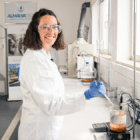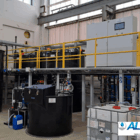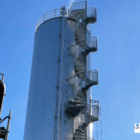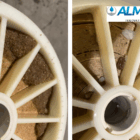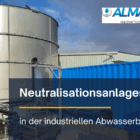The cleaning of tanks and tank trucks is an essential part of industrial processes, especially in the chemical, food and water treatment industries. These cleaning processes produce highly contaminated wastewater that must undergo comprehensive treatment before being discharged into the sewer system or reused. In wastewater technology, the focus is on efficiently treating this cleaning wastewater in order to remove pollutants such as oils, greases, chemical residues, organic substances and solids.
Table of contents
Generation of waste water during tank and tank truck cleaning
Tank cleaning (stationary) and tank truck cleaning (mobile or stationary) lead to specific wastewater that poses a particular challenge due to its composition:
Tank cleaning:
- Cleaning of chemical tanks, sludge tanks or waste water tanks.
- Residues: chemicals, sludges, dusts, organic and inorganic substances.
Tanker cleaning:
- Cleaning of mobile tanks that transport various liquids (e.g. chemicals, oil, food).
- Residues: Product residues (e.g. oils, acids, alkalis, dyes), surfactants from cleaning agents, solids.
Cleaning is usually carried out using high-pressure cleaning, spray nozzles or CIP (clean-in-place) systems, which use large quantities of water and cleaning agents.
Characteristics of the resulting wastewater
The wastewater from tank and tank truck cleaning is heterogeneous and highly concentrated. It has the following main characteristics:
High organic load:
- Chemical residues, surfactants and organic substances lead to a high chemical oxygen demand (COD).
Oils and fats:
- Mineral oils and vegetable oils are often contained and require special separation processes.
Heavy metals:
- Residual chemicals may contain heavy metals such as chromium, zinc or copper.
Solid sediments and suspended matter:
- Residues from the cleaned containers (e.g. sludge, pigments, sand) lead to a high suspended solids load.
Variable pH values:
- Cleaning with acids or alkalis can make the wastewater highly acidic or alkaline.
Wastewater treatment process
1. oil separator: removal of oils and greases
Function and principle
Oil separators separate oils, greases and other light liquids from water. The operating principle is based on the difference in density between oil and water:
- Light liquids such as oil float on the surface of the water due to their lower density, while heavier substances sediment.
- Heavy particles such as sand or silt are deposited in the sludge area.
Procedure
- Coalescence separator:
- Separation is improved by coalescing elements that bring oil droplets together and form larger oil clusters. These rise to the surface more quickly.
- Standard oil separator:
- Efficient in the treatment of wastewater with free-floating oil.
- Two-stage oil separator:
- Integrate a sludge trap zone to remove solids prior to oil separation.
Treatment steps in the oil separator
- Run-in zone:
- Calming the flow to ensure even distribution.
- Coalescence area:
- Formation of larger oil clusters and their deposition on the surface.
- Sludge trap:
- Deposition of heavy particles such as sand and silt.
Advantages of the oil separator
- Effektive Entfernung von Ölanteilen bis zu Konzentrationen von < 20 mg/L.
- Protects downstream systems from blockages and overloads.
- Cost-efficient pre-treatment for heavily oil-contaminated wastewater.
2. chemical-physical treatment in flotation plants
After oil separation, finely dispersed oils, fats and dissolved substances remain in the wastewater. These are removed in a flotation plant by chemical conditioning and physical separation.
Function and principle
Flotation uses fine air bubbles to transport particles and the finest oil droplets to the surface, where they are skimmed off as sludge. Chemical reagents improve the separation performance.
Procedure
Chemical conditioning:
- Precipitant:
- Iron or aluminum salts (e.g. FeCl₃, Al₂(SO₄)₃) for the precipitation of dissolved substances.
- Binding of phosphates or heavy metals.
- Flocculant:
- Organic polymers promote the formation of large, stable flocs that are easy to separate.
- pH adjustment:
- Neutralization of the wastewater by adding acids (e.g. sulphuric acid) or alkalis (e.g. caustic soda) to an optimum pH value of 6.5-8.5.
- Precipitant:
Flotation process:
- Air bubble formation:
- Fine air bubbles are created by pressure release or diffusers.
- Adhesion to particles:
- The air bubbles bind to the flakes or oil droplets, which rise to the surface due to the buoyancy.
- Sludge discharge:
- The foam formed on the surface is continuously skimmed off.
- Air bubble formation:
Advantages of the flotation system
- Efficient separation of the finest oil droplets and particles.
- Reduction of the chemical oxygen demand (COD) and the suspended solids load.
- Suitable for highly contaminated wastewater with variable composition.
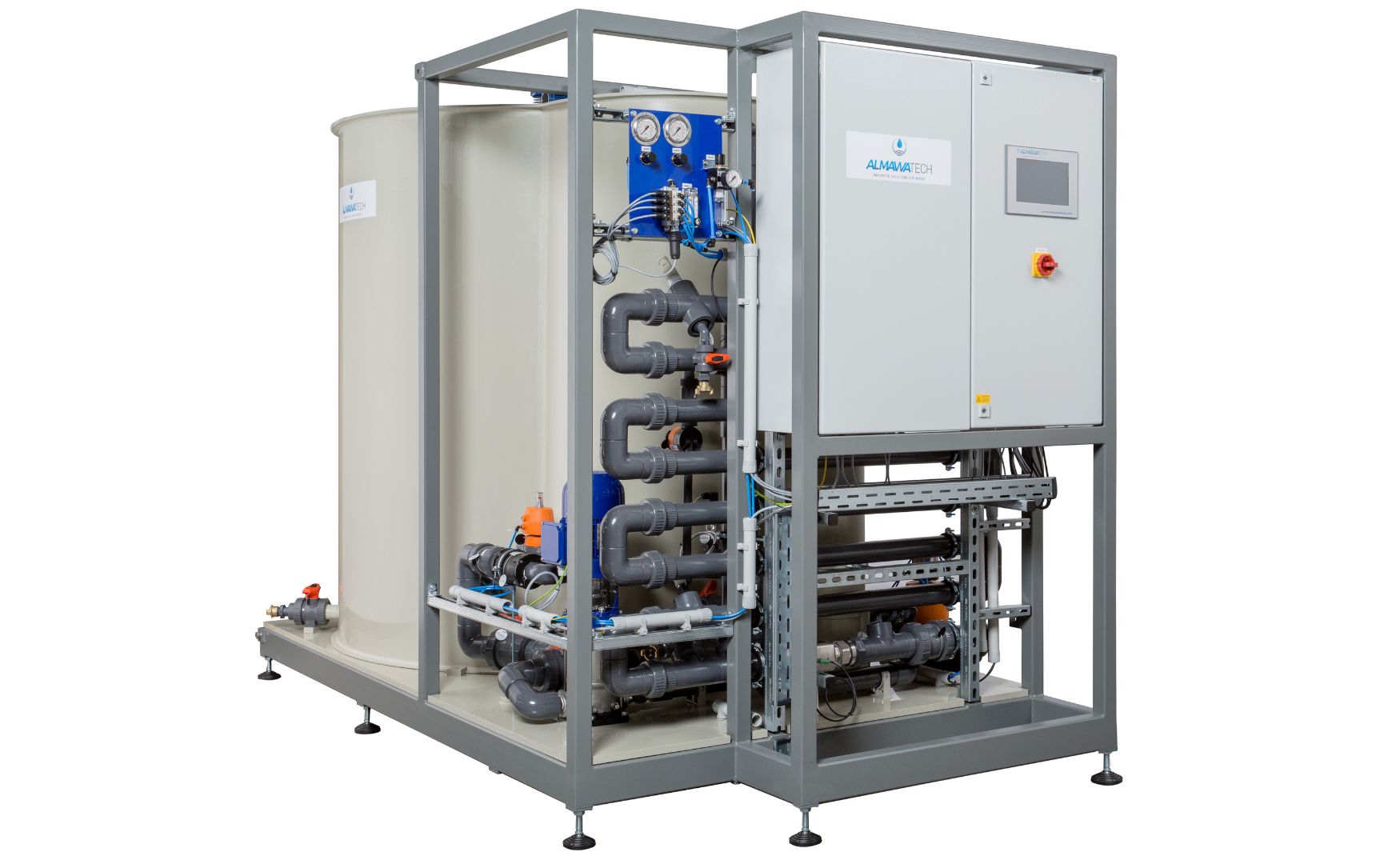
Photo: Our ALMA NeoDAF flotation system for the treatment of wastewater from tanker and silo cleaning with automatic addition of precipitants and flocculants
3. neutralization
During the chemical-physical treatment, the wastewater is neutralized to stabilize the pH value in the neutral range.
Procedure
- Acids (e.g. sulphuric acid) or alkalis (e.g. caustic soda) are dosed to adjust the pH value in the neutral range (6.5-8.5).
- Online pH meters and automatic dosing systems ensure precise control of the process.
Goals
- Protection of the downstream gravel filters from chemical contamination.
- Compliance with legal requirements for pH value before discharge or reuse.
4. filtration through gravel filter
The final treatment is carried out by gravel filterswhich remove fine suspended solids and residues from the wastewater.
Structure of a gravel filter
- Multi-layer systems with different filter layers:
- Top layer: Fine quartz sand to remove the smallest particles.
- Middle layer: Coarse-grained gravel to stabilize the filter layer.
- Bottom layer: Base layer of coarse gravel for even water distribution.
Functionality
- The wastewater flows through the filter from top to bottom.
- Particles and suspended solids are retained by mechanical filtration and adsorption.
Advantages of gravel filtration
- Entfernung feiner Partikel bis zu einer Größe von < 10 µm.
- Cost-effective and simple technology with minimal maintenance requirements.
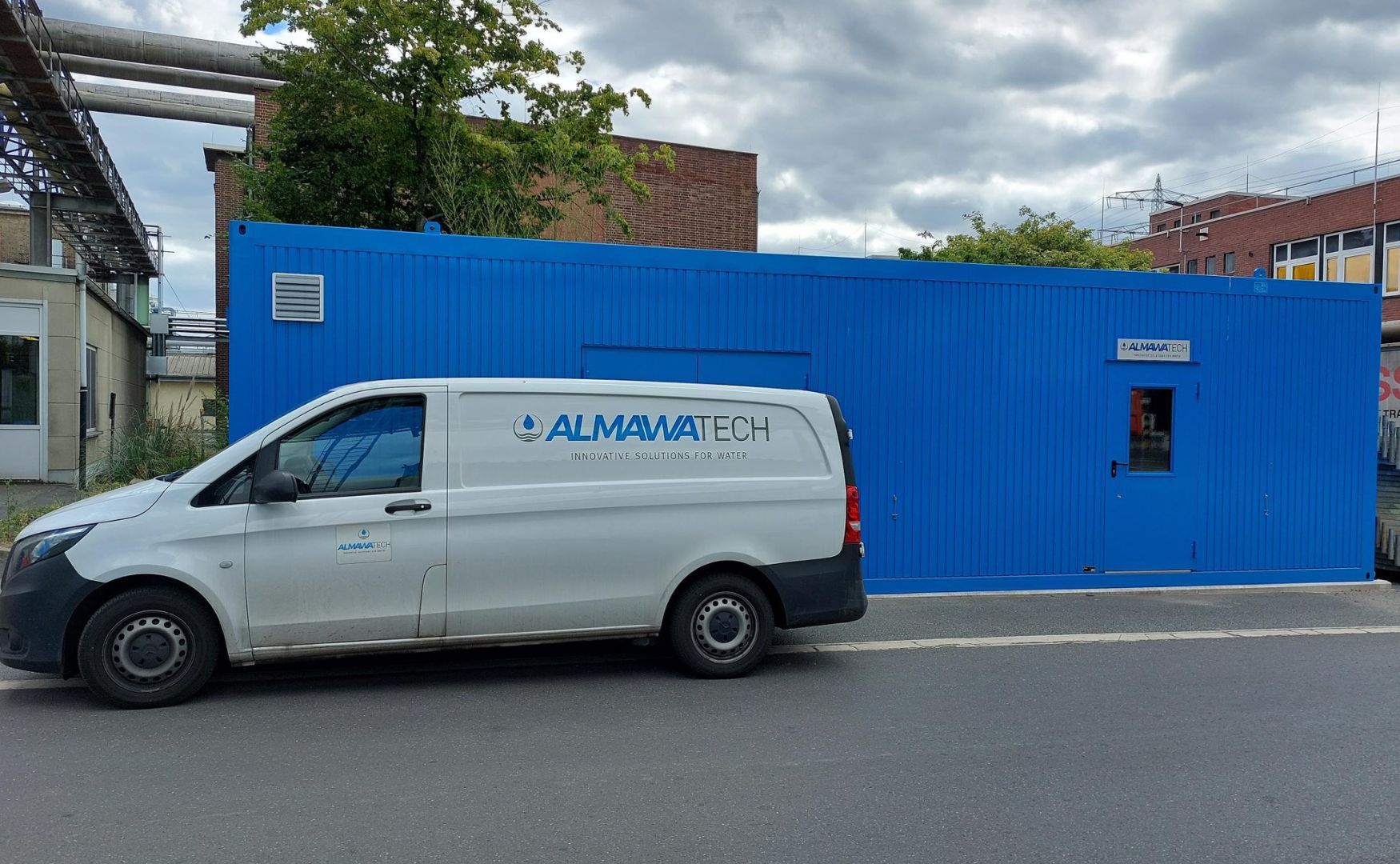
Photo: Our ALMA NeoDAF flotation system with downstream gravel filter for the treatment of wastewater from tanker and silo cleaning, installed in the ALMA Modul technical room container.
Special requirements for the treatment of tank cleaning wastewater
Heterogeneous composition:
- Tank cleaning wastewater varies greatly in its contamination depending on the type of content cleaned.
- Flexible, modular system concepts are necessary.
High peak loads:
- Buffer tanks for wastewater homogenization are essential to compensate for hydraulic and material fluctuations.
Regulatory requirements:
- Einhaltung der Einleitgrenzwerte gemäß Wasserrahmenrichtlinie (WRRL) und lokaler Vorschriften (z. B. CSB < 200 mg/L, Schwermetalle unterhalb spezifischer Grenzwerte).
Conclusion
The cleaning of tanks and tankers generates highly contaminated wastewater that requires differentiated, two-stage treatment due to its composition. The combination of oil separators and flotation technology ensures effective removal of pollutants and enables compliance with strict discharge limits.
For further information on our products, please feel free to contact us at any time!


